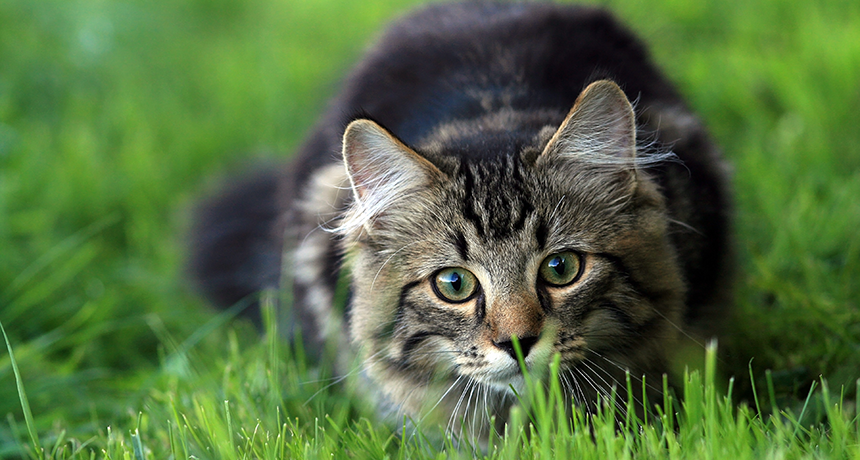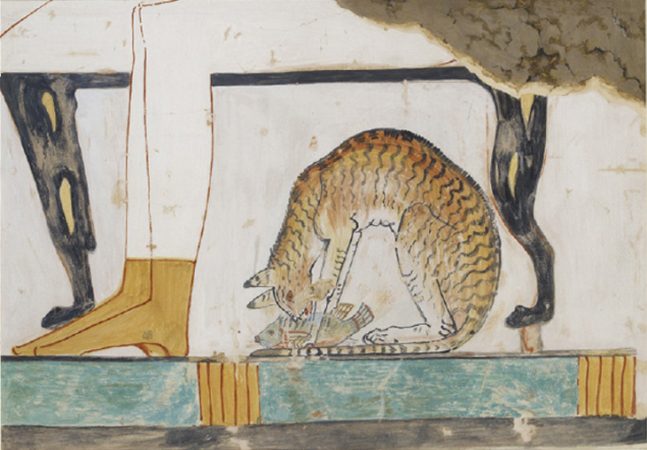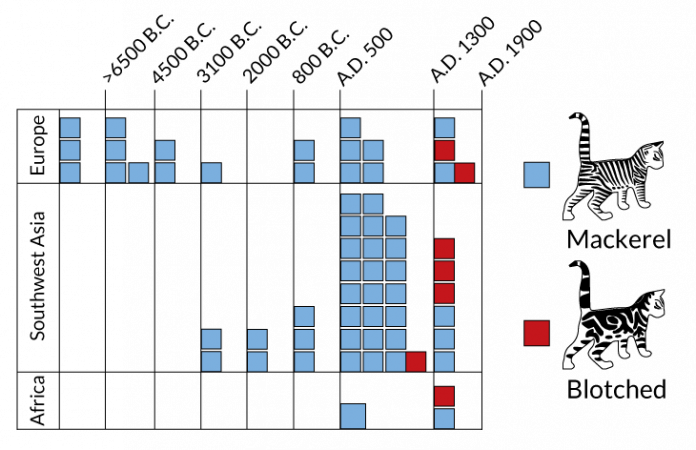DNA tells tale of how cats conquered the world
Analyzing 9,000 years of cat remains points to two waves of feline migration

Before cats achieved world dominion, they spread in two waves, a DNA study suggests. Early Middle Eastern farmers probably brought kitties and agriculture to Europe over land. Egyptian cats may have been transported by boat to far-reaching parts of Europe, Africa and Asia.
Astrid860/iStockphoto
When it comes to revealing when and how wild felines became couch kitties, the cat is starting to come out of the bag. Cats were likely first tamed in the Middle East. Later, they spread — first by land, then by sea — to the rest of the world, researchers now report.
Early farmers brought cats with them to Europe from the Middle East by 6,400 years ago. That’s the conclusion from looking at DNA from 352 ancient cats. A second wave of migration, perhaps by ship, appears to have occurred some 5,000 years later. That’s when Egyptian cats quickly colonized Europe and the Middle East.
Researchers describe how they came to these dates in a new study. It was published June 19 in Nature Ecology & Evolution.
Domestication (Doh-MES-ti-kay-shun) is the long and slow process by which people have adapted wild animals or plants to be tame and useful. Wolves became dogs, for instance. Wild ox became cattle. And wildcats became house cats.
Exactly where and when this happened to cats, though, has been a matter of great debate. Researchers had only the DNA from modern cats to work with. These data showed that house cats had been tamed from African wildcats. What was not clear was when domesticated cats began to spread around the world. Now, new ways of studying ancient DNA are pointing to some answers.
Eva-Maria Geigl and Thierry Grange are behind this deepest dive yet into the genetic history of cats. They are molecular biologists. Both work at the Institute Jacques Monod in Paris, France. Mitochondria (My-tow-KON-dree-uh) are tiny energy-producing structures inside cells. They contain a bit of DNA. Only mothers, not fathers, pass mitochondria (and its DNA) to their offspring. Scientists use slightly different varieties of mitochondrial DNA, called mitotypes, to track the female side of families.
Geigl, Grange and their colleagues collected mitochondrial DNA from 352 ancient cats and 28 modern wildcats. These felines spanned 9,000 years. They came from regions stretching across Europe, Africa and Southwest Asia.
Story continues below image.

About 10,000 to 9,500 years ago, African wildcats (Felis silvestris lybica) may have tamed themselves. They would have hunted rodents and scavenged scraps from the homes of early farmers in the Middle East. People probably encouraged the cats to hang around as a way for these farmers to control mice, rats, snakes and other vermin. The arrangement would have been “mutually profitable for both sides,” explains Grange.
No one really knows how friendly people and cats were with each other at the beginning of cat domestication. Some people may have been very close to their pet cats. Indeed, one person on the Mediterranean island of Cyprus, 9,500 years ago, was buried with a cat. Says Geigl, this suggests that some people, back then, already had close ties to cats.
Before early farmers started migrating from the Middle East to Europe, European wildcats (Felis silvestris silvestris) carried one mitotype. It’s called clade I. A 6,400-year-old Bulgarian cat and a 5,200-year-old Romanian cat had a different type of mitochondrial DNA. They both had mitotype IV-A*. That mitotype was previously seen only in domesticated cats from what is now Turkey.
Cats are territorial and usually don’t roam far. This suggests people must have transported cats to Europe.
Story continues below image.

Mummies (and more) tell another story
Domesticated cats in Africa — including three cat mummies from Egypt — had yet another mitotype. It’s known as IV-C. Until about 2,800 years ago, that type was found mostly in Egypt. But then it began showing up in Europe and the Middle East. And between 1,600 and 700 years ago, it spread far and fast. By then, seven of nine of the ancient European cats the researchers tested now carried this Egyptian type of DNA. Among them was a 1,300- to 1,400-year-old cat from a Viking port far to the north, on the Baltic Sea.
Thirty-two of 70 cats from Southwest Asia also had that mitotype. That rapid spread may indicate that sailors traveled with cats, some of which could have jumped ship to find a new home.
The speedy spread of the Egyptian cats’ DNA could mean that something made these animals especially attractive to people, Geigl and Grange say. House cats aren’t much different from wildcats. The big difference is that domestic cats tolerate people. And the Egyptian cats may have been particularly friendly. They may have more resembled the type of purring pet found in homes today, the researchers speculate. Earlier house cats might have been more comfortable with people than wildcats were, but still have qualified as scaredy cats.
There’s not enough evidence to say that, counters Carlos Driscoll of the National Institutes of Health in Bethesda, Md. Working at its Laboratory of Comparative Behavioral Genomics, he studies the genetic bases of some behavioral traits. And Driscoll now suggests another reason why Egyptian cats got popular so fast: They may have lived along shipping and trade routes. That would have made hopping a boat to some new port easy, especially if they offered to work as mousers on the ship.
Earlier cats may have been just as popular, Driscoll says, but moving them would have been harder. Those early cats, he says, would have been “dependent on somebody putting a bunch of kittens in a basket and walking across a desert with them.”







